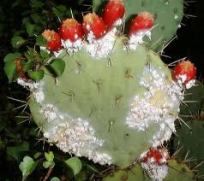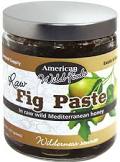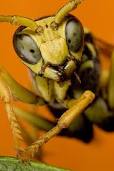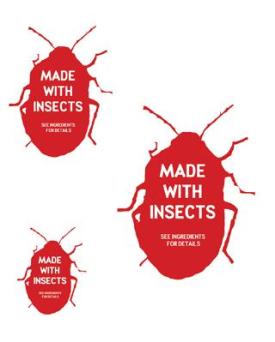New Ingredients in My Favorite Candy?
Happy belated Halloween everyone! Apologies for the lack of blog, allow me to retroactively disgust you as a posthumous October tribute.
Skittles candies have gone vegetarian! Wait, was Skittles not vegetarian? And how has mega corporation Mars not advertised this fact to bring in the raids of plant-eating heathens to their Skittles-purchasing domain?
Perhaps Mars was hoping not to bring any attention to their past ingredient list, no doubt still located in several warehouses around the country. In these bags, you’ll notice three things: Gelatin, E120, and Shellac.

Gelatin is probably no surprise, it’s the slightly unsettling binder made from the boiled down remnants of pig and cow cartilage. A common annoyance for vegetarians, it constantly prevents us from enjoying treats that could so easily not have gelatin, and suffering us to endure such questions as “wait,…you can’t have Jello??”, which makes me ponder this person’s age vis a vis the implied daily Jello consumption. Regardless, it is not gelatin that would have shocked most consumers. It’s the insects.

Soylent Green is People, E120 is Insects
E120, also known as Carmine or Carminic Acid, is a dye that comes from the brutal squishing of the cochineal beetle, which happen to have bright red guts because of its diet of red cactus.

This little insect has been used for hundreds of years by the Aztecs, Spaniards, and now the world to dye clothing. Okay, clothing is one thing, but dripped into my candy nubbin is crossing a line.
Shellac is Insect Poop

Shellac, yes, the shellac, of wood resin fame (also used on pill capsules and nail polish), is a waxy substance that comes from the secretions of the female lac beetle.
These little bugs suck the sap of the trees in Asia, constantly excreting a tunnel shaped turd that we then scrape off, melt, and slather onto our beetle roca Skittles to make em shiny. I mean really, secretions? Need I go on?

Don’t Worry, Now it’s Just Carcinogenic

To replace the beetle innards and outtards, Mars has switched over to Red #40, one of 6 FDA certified fake colors originally derived from coal tar (don’t worry, it’s now derived from family friendly petroleum).
The FDA felt the need to test artificial colors after Halloween 1950, when scads of trick or treaters suffered severe diarrhea and welts due to candies colored with Orange No.1. Later studies (why study before there’s a problem?) showed that 1g/kilo of food killed 2 out of 5 mice in a single day.

Red #40 is an oil derivative that may or may not be carcinogenic and accused of causing hyperactivity (though, could that be the metric ton of candy your child just overdosed on?).
Starting to wonder if beetle juice was a better option? Carmine is still everywhere, but as of 2011 the FDA requires that foods specify if they use carmine (though they are not required to define what carmine is).
Which, to be fair, in this day and age if you don’t know what it is (a red flag in the first place), look it up! Increase your entomological trivia! No one should have to explain every word, if you don’t know that milk is cow  teat extract, or that egg is blended chicken fetus, stop shopping.
teat extract, or that egg is blended chicken fetus, stop shopping.
FDA Regulations on Grossness
Just know that while you mouth-hoover your new kosher candies, you’re still not safe from bug ingestion. The FDA has an entire page defining the maximum limits of various revolting sundries that specific foods may contain. Some examples:

Fig paste: “13 or more insect heads per 100 grams…” 100 grams is a little less than a cup, by the way.
Freshwater fish: “60 parasitic cysts per 100 fish…” It’s the parasitic cysts that give it that pus-like consistency. Ties it together.
Mushrooms: “Average of over 20 or more maggots of any size per 100 grams…” Wow, of any size? And do you like that “over 20 or more” phrasing there?
Popcorn: “1 or more rodent excreta pellets…in 1 or more subsamples…” Excreta pellet! Glorious. Subsample was not defined in this comforting case.
Pizza sauce: “15 or more fly eggs and 1 or more maggots per 100 grams…” There’s that ‘or more’ again. It’s an –ish science. Whatever, free topping!
Asparagus: “10% of spears…6 or more attached asparagus beetle eggs and/or sacs…” Sacs.
Apple Butter: “4 or more rodent hairs per 100 grams…” and “Average of 5 or more whole or equivalent insects per 100 grams…” Whole or equivalent insects. Favorite.
If you were looking for the perfect name for your new punk band, I hope you choose one from this excellent list.

And in case you were wondering (and please do peruse the glossary of terms, it will enlighten you to so many joyous stomach turners) “whole or equivalent insects” is defined as “A whole insect, separate head, or body portions with head attached.” In other words, legs or thorax til Tuesday but once you get a head in the mix, well, let’s just say you’ll never be the head of a major corporation. It’s just no way to get a head in life, being that headstrong.

As a vegetarian I just have to say, suck it vegetarians, we’re all omnivores.
Taste the rainbow!



Dear Chelsea,
I was wondering if you (or anyone else involved in this blog) would help me understand a chemical known as AMRES 652 Wet Strength Resin (a.k.a. ROPL 487G31). More specifically, I was wondering how it is used in the packaging industry. I was also wondering IF IT CONTAINS CHITIN or CHITOSAN, and if it does, I would really like to know which specific invertebrates are involved.
Thank you so much for your time!!
LikeLike
Short answer? No. Long answer: I could tell you about Chitin, but AMRES 652 is starting to get too far into chemistry for this biologist (mock biologist). But, I found this interesting, it kinda goes into the use of Chitin via different methods, though does not get specific about the chitin origins themselves. AMRES 652 is used in dying clothing, if it’s safe or ethical clothing you’re interested in, here’s a great list of NGOs that promote them.
LikeLike
You kill me, Chelsea.
LikeLike
Impressive.
LikeLike
So if, ON AVERAGE, my mushrooms contain LESS than 20 or more per 100 grams, does that mean I can’t sell them??
LikeLike
What I want to know is, if I sell maggots, how many mushrooms are okay to throw in the mix?
LikeLike
Saved as a favorite, I like your blog!
LikeLike
thanks!
LikeLike
Sick! Awesome, but I am totally grossed out. I could hear your voice as I read this piece.
LikeLike
Sick awesome should be one word. Glad you could join me Meghan!
LikeLike
Charlie, age 6, responds to this blog, “You can eat bugs. They’re good.”
LikeLike